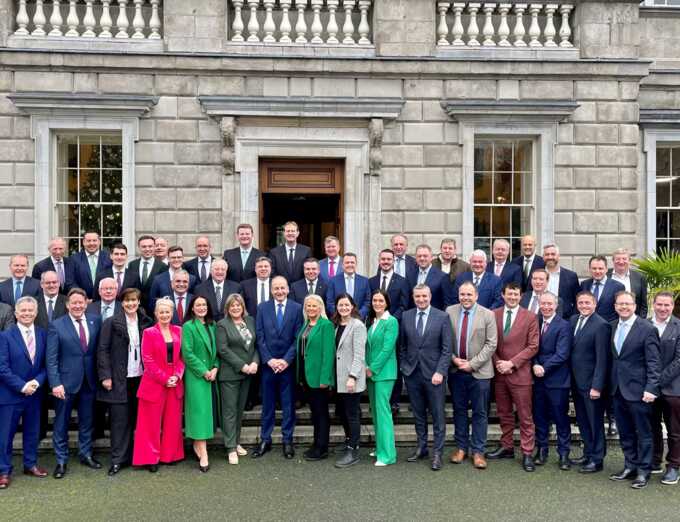

Out of 174 seats in the November election, 44 went to women in a representation of slightly more than 25%
Ireland’s new parliament has the lowest proportion of female parliamentarians in western Europe, an analysis has revealed, suggesting that a country that elected its first female president more than three decades ago has trailed behind when it comes to the inclusion of women in politics.
An analysis of Inter-Parliamentary Union data by Bloomberg, published on Friday, described the Irish parliament as the “worst for gender diversity in western Europe”.
Out of the 174 seats up for grabs in the November election, 44 went to women, amounting to a representation of slightly more than 25% – a stark contrast to the western European average of 37% when it comes to female parliamentarians. Across Europe as a whole, female parliamentarians make up an average of 32% of parliaments.
Ireland adopted gender quotas in 2012, with the requirement boosted to 40% in the most recent election. The result was 246 female candidates – the highest number registered to run in an Irish general election.
Of these candidates, 44 were elected to the Dáil Éireann, or lower house of the Irish parliament. While campaigners noted that this figure marked a slight increase from the previous election, they were swift to add that it was also indicative of the work that remained to be done.
“It’s progress, but it’s slow progress,” said Women for Election, which promotes women’s participation in Irish politics.
The National Women’s Council of Ireland noted that the results meant there was still “no breakthrough for women” in Irish politics.
“The results show that, in isolation, the gender quota will not be enough to achieve equal representation for women,” said Orla O’Connor, the council’s director, in a statement. “There is evidence that many women were added late to the ticket to make up the gender quota. We are calling on all political parties to ensure women candidates are selected as early as possible to ensure they have sufficient time, support and resources for their election campaign.”
The council also called on the new government to prioritise measures to increase the number of women in politics, such as a 40% gender quota in local elections that could allow women from diverse backgrounds to gain a foothold in politics.
In 1990, Ireland elected its first female president, Mary Robinson, but while countries such as Belgium introduced legislation to increase women’s political participation as early as 1994, it would take nearly two decades for Ireland to introduce a gender quota for general elections.
Gender parity in politics remains an unfulfilled goal across Europe, with Iceland coming the closest after a 2021 election that resulted in women holding 47.6% of the seats in its national parliament. On the other end of the spectrum sits Hungary, with 15% female parliamentarians, and Romania, with 19%.
Writing in the Guardian on Friday, Michelle Bachelet, the former president of Chile, noted that at the current pace of progress, it would take parliaments around the world roughly 130 years to achieve gender equality.
“Gender isn’t the only example of the disconnect between politics and people, but it is a particularly stark one,” she wrote. “How can our system of representation neglect half of the people it is meant to represent?”